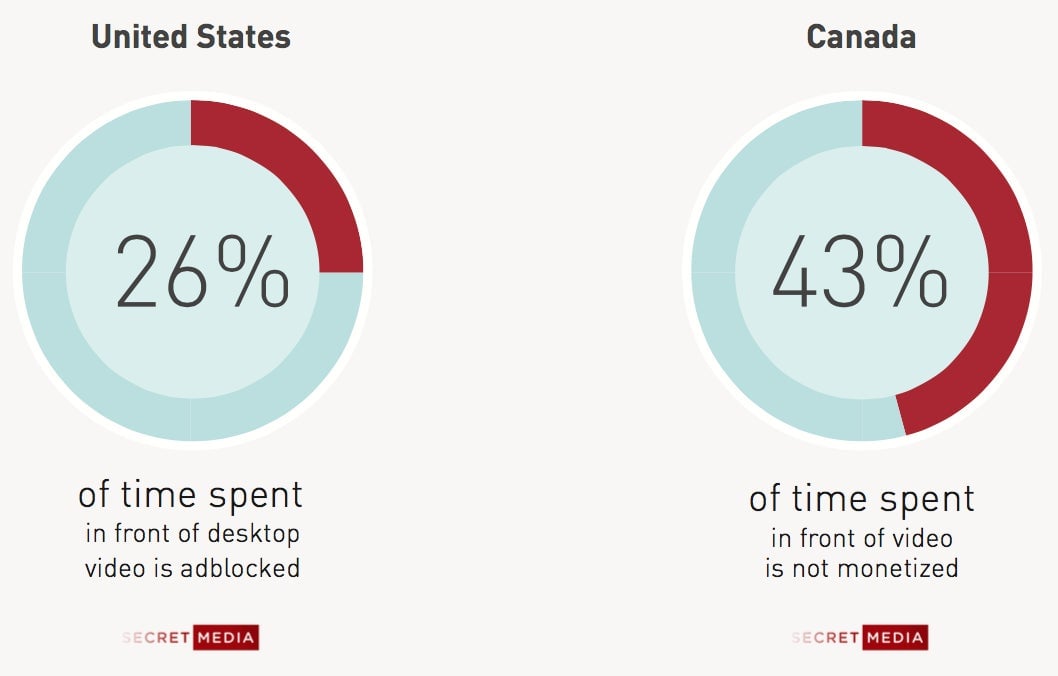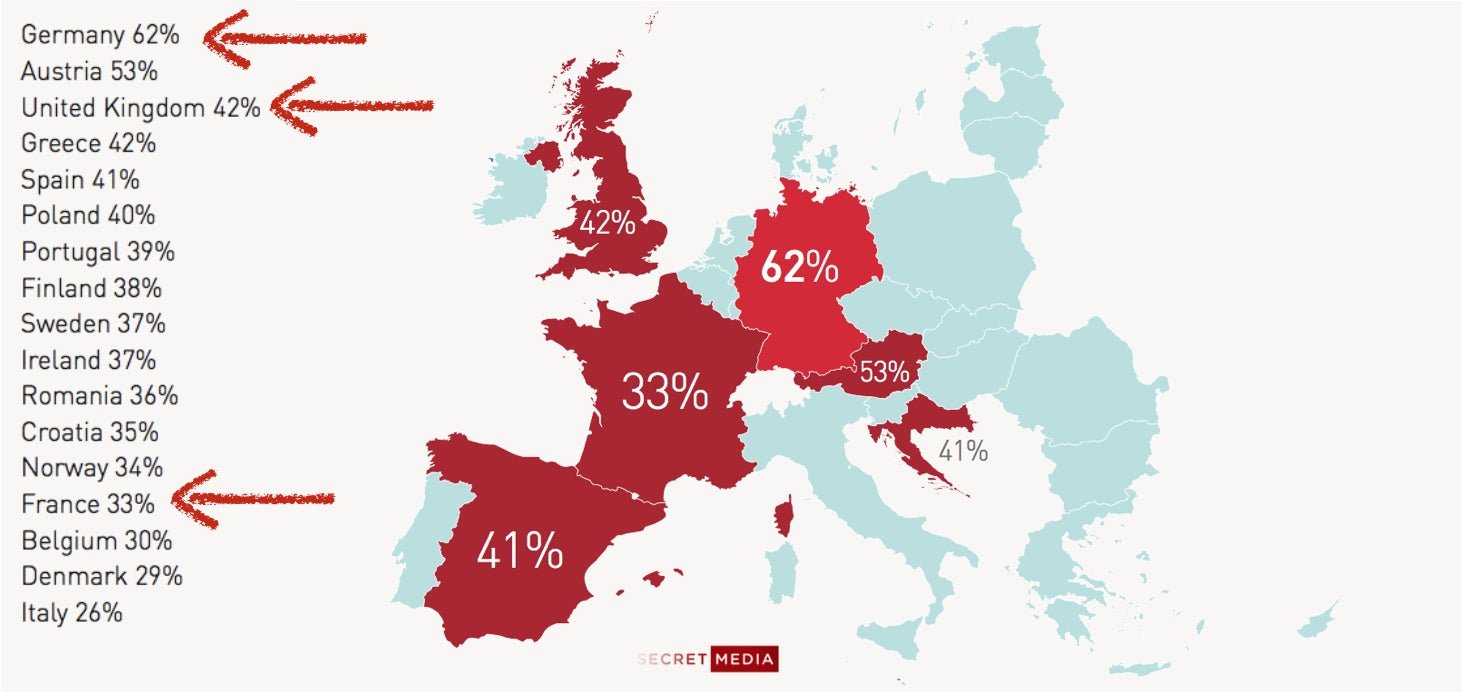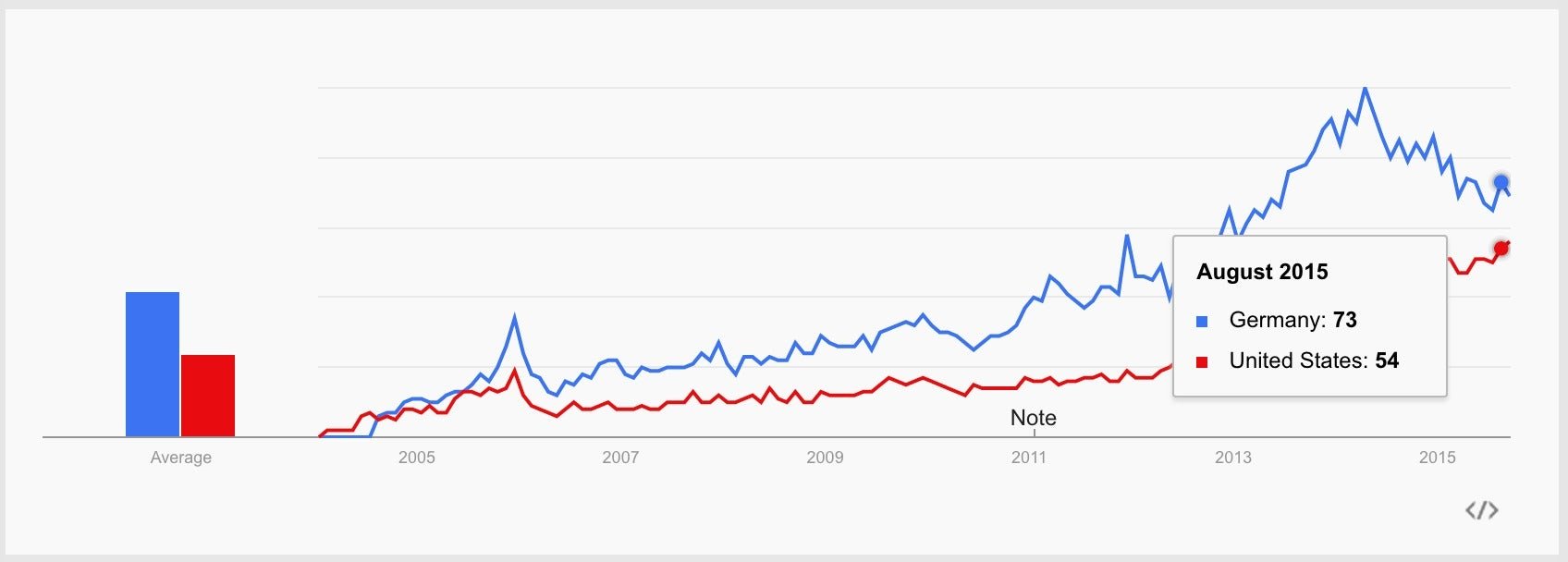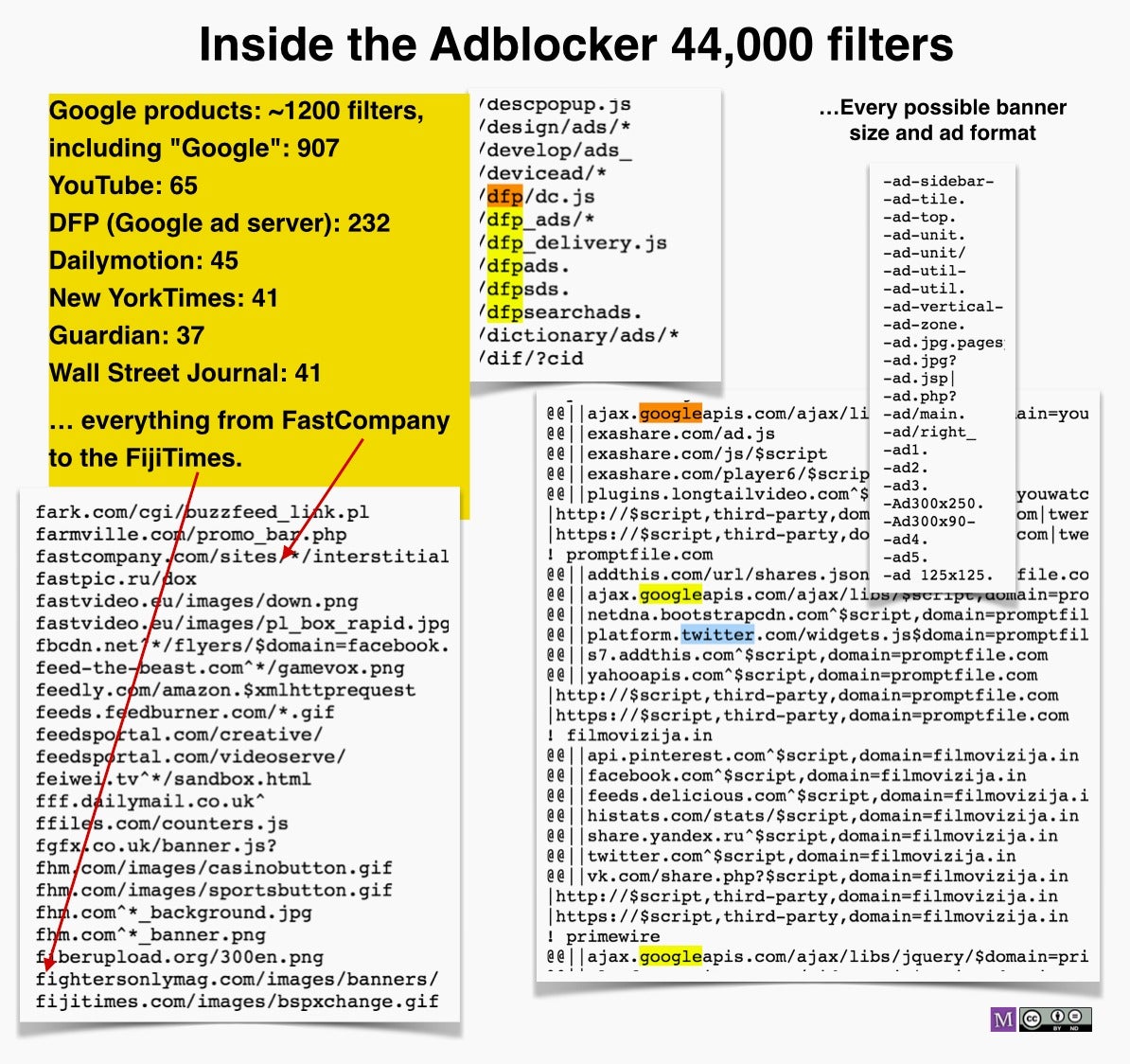It’s hard to blame adblockers when online video is pretty much unbearable
According to a new SecretMedia study, because of ad blocking software, one quarter to two thirds of video time ends up un-monetized. While broadcasters begin to grasp the full vibrancy of the ad-blocking ecosystem, the advertising community inexplicably lags behind.


According to a new SecretMedia study, because of ad blocking software, one quarter to two thirds of video time ends up un-monetized. While broadcasters begin to grasp the full vibrancy of the ad-blocking ecosystem, the advertising community inexplicably lags behind.
Right now, on digital, video is where the money is. Original production, short segments designed to be spread around, recycled footage from third party providers, and commodity videos scattered by ad-tech firms such as Outbrain or Taboola, all appear to achieve some level of profitability, direct or indirect.
Bespoke productions command stratospheric CPMs when they are viewed in full—an important distinction. Shallow contents yield modest CPMs but catch up with huge impression numbers. Some short clips make their way to the social galaxy, mostly to harvest traffic and direct it back to the original site; others exist solely on social. One prominent example of the latter is Buzzfeed. The company has pushed the concept to an industrial level, producing about 200 videos per week (roughly 20% of them for brands), generating billions of views each month, 95% of which are on Facebook.
Unfortunately, the video frenzy comes with the usual toxic waste. Eager to make a quick buck and disregarding the most basic audience feedback, too many media saturated their digital properties with paid videos, and launched them automatically (the lethal autoplay feature), often at full audio volume. For more legit editorial content, usually preceded by 30 second “pre-roll” ads, most publishers went against common sense and decided to use un-skippable ads rather than ones in which a promotional video can be bypassed after five seconds. When one can’t evade such ads, most video content becomes just unbearable. Viewers were understandably upset, but publishers ignored the uproar. As a result, audiences voted with their mice and, to get rid of parasitic videos, installed adblockers software en masse.
Milking that cow turned out to be a bad idea.
Using its thorough analytics, YouTube was first to understand that viewers should be given the opportunity to skip videos ads. This markedly increased the value of actually viewed clips.
But the damage is done. With ad blockers, the tragedy is that one bad apple contaminates the whole crate. Once installed, the adblocker will indiscriminately eliminate ads from all sites. The few that were willing to preserve a decent user experience were washed away.
Between April and June 2015, SecretMedia, teaming up with with JW Player, reviewed the data from one billion devices in 42 countries. Here, precautions are warranted: SecretMedia, based in New York, sells an anti-adblocking solution for video; its clients are mainly broadcasters. But even though SecretMedia has a vested interest in darkening the picture, its conclusions are consistent with other surveys in the US and Europe.
Here are the main conclusion for the share of time spent watching video that does not generate any monetization, in North America and Europe:


As we can see, blocking video ads is very effective, even if the impact varies widely from country to country. In most cases, Frederic Montagnon, SecretMedia’s CEO explains, the cultural perception of ads is the prime reason for adblocking use: “The rate of 26% observed in the United States is an average. If you take upscale cities like New York, San Francisco, or Seattle, the level of adoption is in fact comparable to Canada’s [43% adblocked], but in the center of the country, penetration is lower.” Montagnon also observes that the loss of revenue related to adblockers use might be even higher than raw use numbers suggest: heaviest video consumption correlates with higher adblocking use.
In Europe, Germany’s “performance” (63% of video time adblocked) finds its roots in the fact that Eyeo GmbH, the maker of AdBlockPlus, is headquartered in Cologne, which got it a great deal of media attention. Look at compared Google Trends in Germany and the United States:

At its peak, a year ago, “adblocking” headlines were two times more frequent in Germany than in the US. (Germany, like many European states, has a solid track record of protecting digital privacy, and of fueling the European anti-Google hysteria; see our recent stories here and here.)
In markets plagued by adblockers, no one has any interest whatsoever in publicly highlighting the extent of the problem. Publishers don’t want to accelerate the downward spiral of prices paid by advertisers. Nor are media buyers and creative agencies willing to further weaken their market. One example of this willful ignorance: In the United States, the Internet Advertising Bureau (IAB) waited this month of September 2015 to set up a committee on the subject of ad blocking. Its first idea was full-scale legal action against Eyeo and its ABP blocker. The IAB backed down, coming to see that a lawsuit wasn’t the best way to solve the problem: two distinct rulings issued by German courts effectively made adblocking legal.
The adblocking epidemic bears all the characteristics of a digital mob. It’s decentralized, open source, non-profit (at least in theory—in fact, Eyeo’s business model borders on racketeering), and it’s largely community driven. The system’s core is an extensive list of filters. In the the 44,000 lines I counted (thanks to a Google Spreadsheet) in the English-language EasyList, you will find every possible way to block ad formats. This list is loaded on your computer and ABP updates it every 4 days. Here is a small sample:

Every news site, e-commerce site–large or small–ad-server, and re-targeter is accounted for. That’s for the English-speaking market. The French list has 5,000 filters, the German one 8,000. Nurtured by such a vibrant community, there is virtually no escape: the lists cover every possible expression of advertising formats, static or dynamic. Even branded contents begin to be generously covered by ad blocking lists—too much so in fact; legit editorial contents sometimes get caught in the net woven by anti-advertising zealots.
Attempts to bypass filters lead to endless cat-and-mouse games. Some try to create undetected proxies to host ad formats—but sooner or later, the proxy is uncovered and added to the filters list. On the video market, SecretMedia tries a different approach: algorithms that randomly rewrite and encrypt every piece of code or script that call an ad format. The system generates unique code gibberish, transforming every “call” to an ad format into a moving target for adblockers. SecretMedia claims to round up scores of US broadcasters panicked by their revenue hemorrhage. The company chose to focus its efforts on video because it pays much more than banners or sponsored contents.
Dealing with adblockers requires a multi-front strategy, including a fresh look at the abuses of digital advertising. If these excesses stay ignored, the epidemic is likely to spread to every monetization tool. The EasyList system maintains an EasyPrivacy compilation of 10,000 filters that target every analytics tools, such as Chartbeat (36 filters alone), or any other instrument to track and target users. For unknown reasons, AdBlock Plus doesn’t activate EasyPrivacy filters as a default. For now.
This post originally appeared at Monday Note.